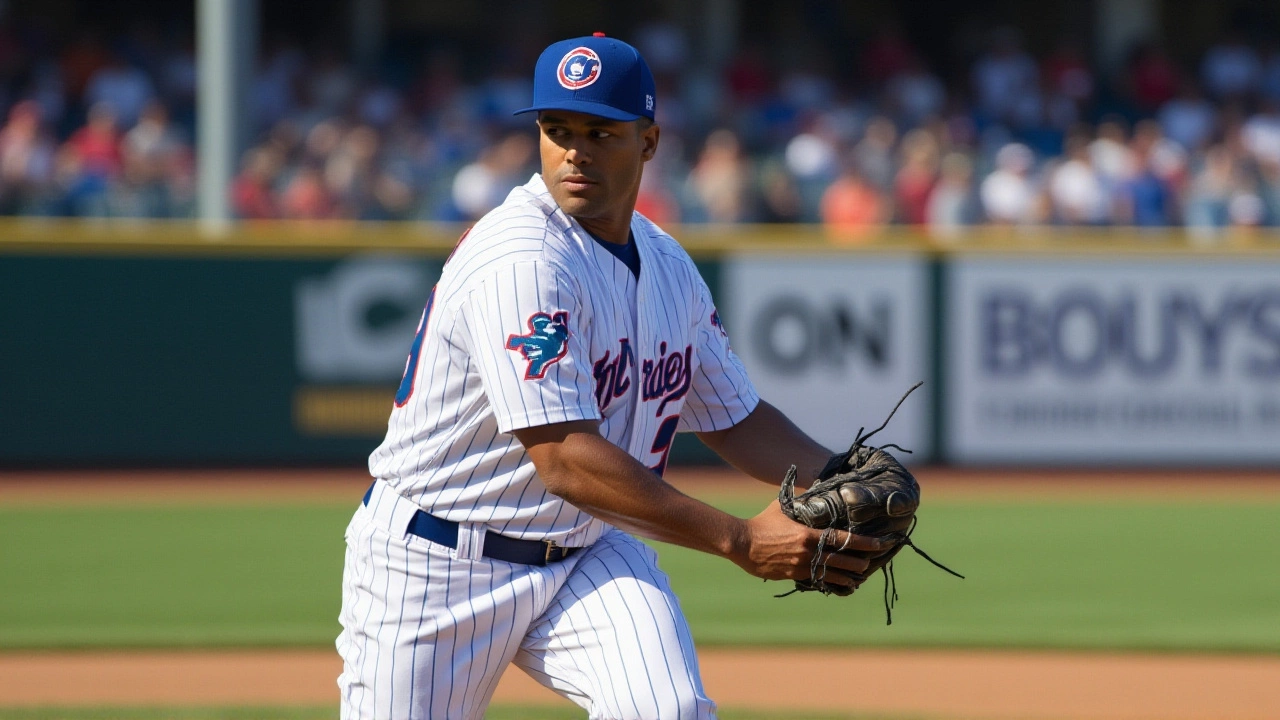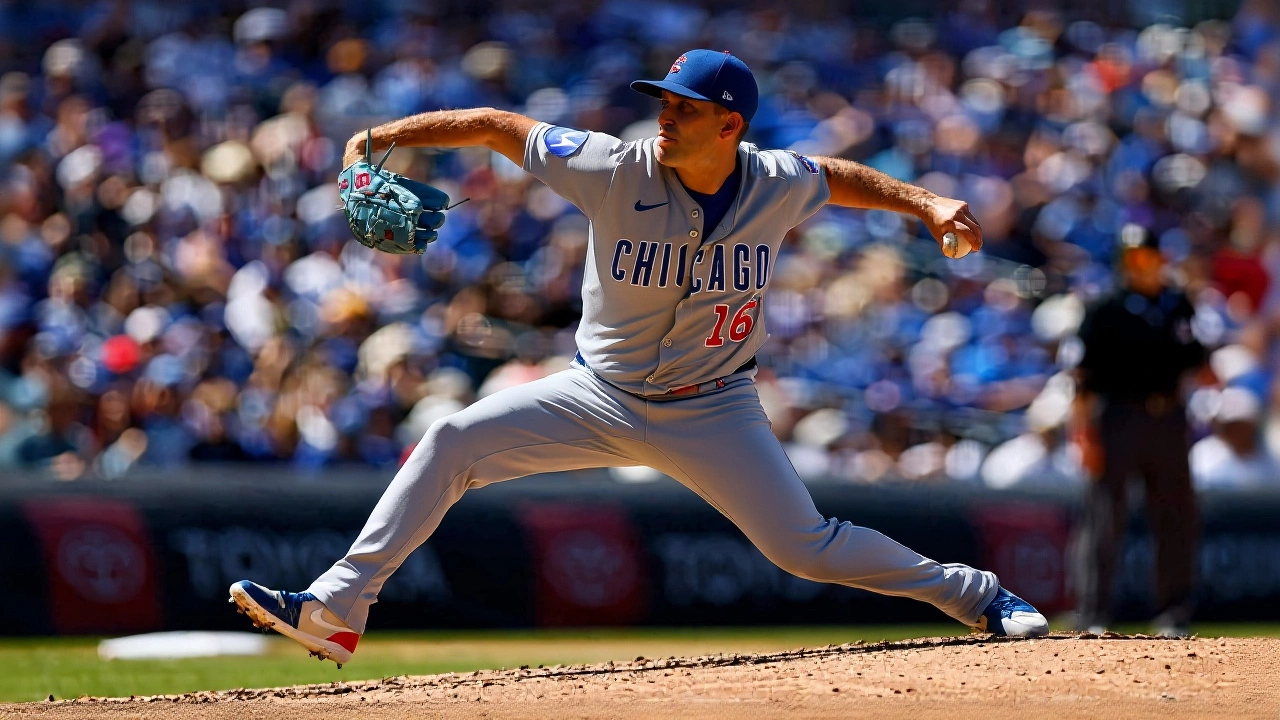When Chicago Cubs edged out the San Diego Padres 3-1 at Wrigley Field on Tuesday, the Cubs punched their ticket to a first‑ever NL Central showdown in the National League Division Series against the Milwaukee Brewers. The win not only snapped a tense wild‑card duel but also gave Chicago a chance to rewrite a rivalry that’s lingered for decades.
Why This Victory Matters
Beyond the three runs on the board, the game offered a micro‑cosm of why the postseason feels like a different sport. Matthew Boyd kept the Padres off‑balance early, while shortstop Dansby Swanson turned two potential extra‑base hits into out‑field showcases. For a club that barely clinched a wild‑card slot, the win is a morale boost and a reminder that a solid bullpen can neutralize even the most potent lineups.
Game‑by‑Game Recap
The second inning saw the Padres seize a 2‑0 lead with back‑to‑back doubles from Jackson Merrill and Xander Bogaerts. An error on Bogaerts’ throw to third forced the Cubs to pull their infield in with no outs, but Swanson’s diving grab on Ryan O’Hearn’s grounder erased the threat. Four innings later, Swanson again stretched to snag a soft line drive in shallow center, preserving a slim lead that would hold.
Chicago’s offense finally clicked in the fifth. Michael Busch’s leadoff single set the stage, and a two‑run double from Pete Crow‑Armstrong turned a 1‑1 tie into a 3‑1 advantage. The Cubs bullpen then delivered 4 2⁄3 shutout innings, limiting San Diego to just four hits overall.
Voices from the Diamond
Padres manager Mike Shildt admitted his club let Boyd “off the hook” early, yet he praised his players for staying “confident” despite the loss. Catcher Jake Cronenworth summed up the locker‑room mood: “Tomorrow’s it. Forget about what happened today. Almost everybody in this room has been in a must‑win game.” Fernando Tatis Jr. echoed a similar sentiment, recalling the 2020 comeback: “Do it again, like we did that year. We have a lot of confidence in the room.”
Cubs second‑baseman Nico Hoerner turned the spotlight on the upcoming series, noting, “It feels fitting, right? They’ve had an incredible season. Every regular‑season game we play with them is seemingly higher stakes.” His optimism was palpable, especially given the Brewers’ league‑best 102‑60 record.
NLDS Preview: Cubs vs. Brewers
The Division Series pits two long‑time rivals against each other for the first time in the playoffs. Chicago’s starting lineup features Michael Busch (1B), Hoerner (2B), Ian Happ (LF), Kyle Tucker (DH), Seiya Suzuki (RF), Carson Kelly (C), Crow‑Armstrong (CF), Swanson (SS), and Matt Shaw (3B). The Brewers counter with Christian Yelich (DH), Jackson Chourio (LF), Brice Turang (2B), William Contreras (C), Sal Frelick (RF), Andrew Vaughn (1B), Blake Perkins (CF), Caleb Durbin (3B), and Joey Ortiz (SS).
Managerial intrigue adds another layer. Craig Counsell will face his former bench‑coach turned Brewers skipper Pat Murphy. The two have roots at Notre Dame in 1989 and spent eight seasons together on the Brewers’ staff before Counsell took the Cubs helm last year.

Brewers: The Season That Set the Bar
- Best regular‑season record in MLB: 102‑60.
- Christian Yelich moved to leadoff, boosting his on‑base percentage to .408.
- Freddy Peralta (4‑4, 3.15 ERA) and Quinn Priester (5‑2, 2.87 ERA) slated to start the first two NLDS games.
- Joey Ortiz’s defense earned a Gold Glove nomination despite a .478 OPS over his last six weeks.
The Brewers’ bullpen, anchored by Jhony Brito and Trevor Hauver, posted a league‑best 2.71 WHIP, suggesting they can shut down the Cubs’ contact‑heavy approach if they get the early innings right.
What to Watch in Game 1 (Oct 4, 2025)
Pitching will be the decisive factor. Boyd’s fastball‑slider mix has a 38% swing‑and‑miss rate, while Peralta’s sinker‑curve combo keeps batters guessing. Meanwhile, the offensive matchup pits Yelich’s elite plate discipline against the Cubs’ aggressive base‑running. Expect both managers to lean on their veterans in the ninth inning – a nod to the series‑long “experience over youth” mantra.
Beyond the stats, the emotional backdrop could turn the tide. The Cubs are still riding the thrill of a wild‑card escape; the Brewers are carrying the weight of a franchise‑record season. Whichever team harnesses that pressure first will likely sprint ahead.
Key Facts
- Result: Cubs 3, Padres 1 (Game 1 Wild Card Series)
- Date & Venue: Tuesday, Sep 30, 2025 – Wrigley Field
- NLDS Start: Sat, Oct 4, 2025, 1:08 p.m. at American Family Field
- Winning Pitcher: Matthew Boyd (3 IP, 2 H, 0 R)
- Series Lead: Cubs advance to face the Brewers
Frequently Asked Questions
How does the Cubs' win impact their chances in the NLDS?
The victory gives Chicago momentum and a rested bullpen, crucial against Milwaukee’s deep rotation. Statistically, teams that win a wild‑card game have a 56% win rate in the subsequent division series, so the Cubs are positioned well, though the Brewers’ firepower remains a formidable obstacle.
What are the key injuries heading into the series?
Both clubs listed minor fatigue in their relievers, but no major injuries have been reported. The Padres will be without shortstop Fernando Tatis Jr. for the next game due to a strained hamstring, while the Brewers plan to give starter Quinn Priester a full rest after his 102‑pitch effort.
Who are the likely starters for Game 1 of the NLDS?
Chicago is expected to stick with Matthew Boyd on short rest, while Milwaukee will launch Freddy Peralta as the opening pitcher, matching Boyd’s experience against a balanced Cubs lineup.
What historical rivalry factors are at play?
This marks the first postseason meeting between NL Central rivals since the one‑game playoff in 2018, which Milwaukee won. The shared history, combined with the managers’ long‑standing professional relationship, adds a layer of personal drama that could influence in‑game decisions.
How have the Brewers performed in recent postseason series?
Milwaukee reached the NLCS in 2023 and back‑to‑back NLDS appearances in 2021‑2022, but they have never advanced past the NLCS since 2011. Their recent depth and regular‑season dominance suggest they are hungry to finally break that barrier.


